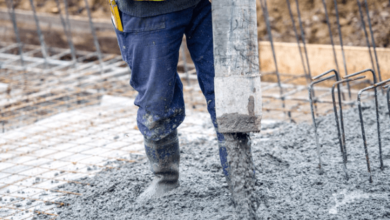Why a Shower Base Makes Your Bathroom Safer

Bathrooms are one of the most accident-prone areas in a home. According to a Chinese Household Safety Report, 23% of all home injuries occur in the shower due to slippery floors or trips, with seniors, children, and pregnant women being the most vulnerable. Many people think simply using anti-slip tiles is enough, but in reality, traditional tiled showers still pose hidden dangers: water pooling, tripping over high curbs, and leaks in grout lines.
This is where Giving Tree shower bases come in. Designed with material, structure, and smart engineering in mind, they act as a safety barrier for your shower.
1. Tackling the Biggest Risk: Slips
The most common danger in showers is slipping on wet floors. Traditional tiles drop in friction from 0.6 when dry to below 0.3 when wet (safety standard ≥0.5). Seniors and children are especially vulnerable—one misstep can lead to fractures or serious injury.
Shower bases solve this at the source with anti-slip materials and surface designs.
Anti-Slip Materials
High-quality shower bases are engineered to maximize grip even when wet:
- Ceramic Bases: Double-layer anti-slip glaze creates tiny visible textures (0.1–0.2mm deep) that increase friction while remaining comfortable underfoot. Water gets trapped in these textures, preventing slippery “water films.” Friction stays around 0.6–0.7—well above wet tile surfaces.
- Acrylic Bases: Embedded anti-slip particles (e.g., silica microgranules) form a subtle grip layer. Even with water, friction stays above 0.55. Acrylic also feels softer than ceramic, reducing foot fatigue or discomfort for seniors and children.
Smart Drainage
Traditional tiled showers rely on manually sloped floors. If the slope is off by even 0.5%, puddles form, especially in corners or near curbs, increasing slip risk. Shower bases solve this with:
- Integrated slope: Built-in 1.5–2% slope ensures water quickly reaches drains, drying surfaces 30% faster than tiles. Usually, the base is nearly dry 5–10 minutes after showering.
- Clog-resistant drains: Filters catch hair and debris, while anti-vortex designs prevent water from creating suction underfoot—especially safe for children.
See also: Why Nursing Care at Home is Beneficial for Patients and Families?
2. Preventing Trips: Low or No Threshold
Tiled showers often have 10–15cm curbs to block water, but these can be tripping hazards for seniors, kids, pregnant women, or those recovering from surgery.
Shower bases address this with low-threshold or barrier-free designs:
- Low-threshold (4–6cm): Almost flush with standard tile height (3–5cm), so stepping in feels natural and reduces trip risk by over 90%.
- Barrier-free (≤2cm): Uses recessed drainage for completely level entry—wheelchairs or strollers can roll in safely, perfect for families seeking accessibility or minimalistic design.
Seamless Edges
Tiled curbs with gaps or worn sealant can catch toes or heels, and cause water leaks. Shower bases are one-piece, seamless, often with a slight 1–2cm raised edge to block water without creating a tripping hazard.
Even models paired with doors include integrated seal channels, so the door fits perfectly with no protrusions, further reducing bumps and trips.
3. Preventing Water Damage: Stop Moisture Before It Starts
Leaky tiles can leave floors damp, promote mold, and even affect electrical wiring, creating hidden safety risks. Shower bases eliminate this with integrated, sealed construction.
- No joints, no leaks: One-piece design prevents water from seeping through grout or base layers. A waterproof gasket or mortar ensures a tight fit with the floor, almost eliminating seepage.
- Electrical safety: Keeps floor and wall surfaces dry, protecting outlets and hidden wiring from moisture-induced shorts—a critical feature in older homes.
4. Family-Friendly Design: Safe for Everyone
Shower bases aren’t just generally safer—they include specific features for seniors, children, and pregnant women.
- For seniors: Slightly flexible acrylic surfaces cushion falls, reducing impact by 20–30%. Optional handrail mounts provide extra stability when entering or exiting.
- For children: Rounded edges prevent bumps, and smooth, gap-free surfaces make cleaning easier, reducing contact with dirt or mold.
- For pregnant women: Wide entry and low threshold reduce leg-lifting effort, while high-friction surfaces ensure stable footing even with reduced balance.
Conclusion: Safety First
Many underestimate the safety benefits of a shower base, thinking “I won’t fall.” But home safety is always about prevention, not repair. Traditional tiled showers have hidden slip, trip, and seepage hazards. A properly designed shower base addresses all three: anti-slip, low-threshold, and waterproof, making showers safer for seniors, children, and pregnant women.
Choosing a shower base isn’t just about comfort—it’s visible, tangible protection for your family. After all, in home life, safety comes first.






